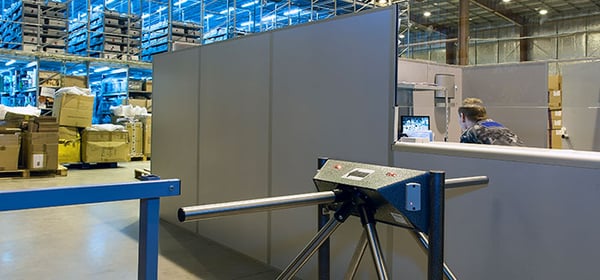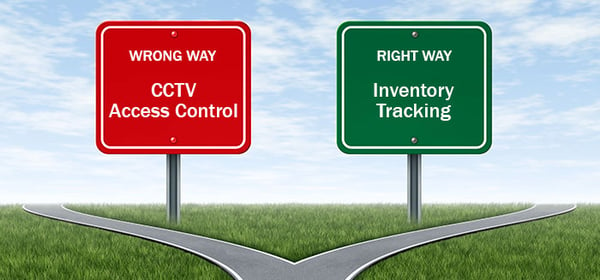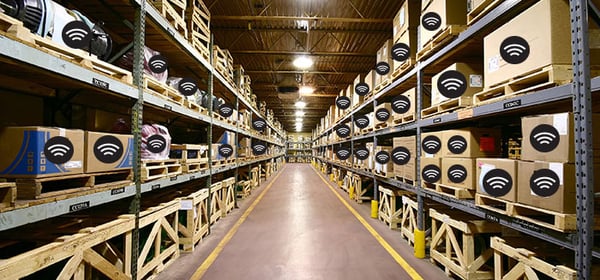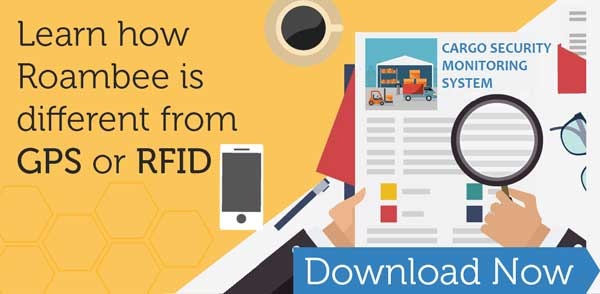Warehouse security systems have traditionally focused on protecting the warehouse, not the goods or assets stored inside. The right way to approach warehouse security is by using a warehouse monitoring solution that keeps track of your inventory.
Warehouse theft prevention and security is an old problem, but it is only in the last few decades that technology solutions evolved to address them better.
Warehouse security technology solutions today work on controlling access and capturing live footage through Closed Circuit Camera Televisions (CCTVs).
Along with warehouse security cameras and access control technologies, warehouse managers created standard operating procedures for personnel entering and existing warehouses.
Not all of this helped!
Many slowed down the warehouse throughput by imposing too many restrictions on access and goods handling. In many warehouses, contractors and vendors entering the premises are put through intensive security screenings.
Others employ a lot more security guards than needed, to ensure that SOPs are adhered to day on day.
In some warehouses, even employees are frisked upon their exit at the end of the day’s shift.
The approach to warehouse security always focused on the warehouse as a unit. The same emphasis was not necessarily provided to the goods moving in and out of the warehouse, which were ultimately the items that were subject to theft.
Hybrid IoT technologies can change that, helping you secure your goods, not just your warehouse.
Drawbacks of CCTV Surveillance for Warehouse Security

CCTV cameras capture every second of the action during an inventory theft. They also come in handy when it comes to evidence for the law enforcement or insurance proofs.
Yet, warehouse inventory theft cannot be prevented by security cameras alone.
Someone always needs to watch closely if items are being picked (with malicious intent). This is close to impossible because your employees, vendors, and contractors are constantly picking up and dropping goods in your warehouse. It is hard to differentiate between regular handling and someone intentionally storing an item away, only to walk out with it later.
Optical Character Recognition (OCR) systems are evolving to analyze CCTV footage in real-time and predict a theft. But, they are still far from reliable in differentiating normal handling from malicious intent.
Therefore, whether you employ a hawk-eyed security guard watching the warehouse security camera or you are using the best-in-class OCR technology, theft within the warehouse is extremely hard to catch instantly – especially if the items you store are small and of high value.
Drawbacks of Access Control Systems or Employing More Warehouse Security Guards

Implementing screenings and security protocol at the point of entry/exit is good practice, but when this is over-emphasized, it can slow down your warehousing process and increase your cost of warehouse maintenance.
Frisking your employees for a minute each upon entry and exit in a 200 employee warehouse can take 200 minutes or about 3 hours in total. This is not only an additional labor cost of 3 hours per day, it could also lead to long lines at the entrance door.
Access control systems like swipe cards or RFID or biometric systems can help identify who went in and who left, but cannot indicate if an item is stolen.
What is the Right Approach to Warehouse Security Monitoring?

The right approach to tackling warehouse security is by monitoring your warehouse inventory in real-time.
Since it is the goods inside the warehouse that you most care about, they are the ones that need the most protection.
By monitoring your warehouse inventory, you can do the following:
- Know instantly if pilferage has occurred - You will know within minutes if your inventory goes missing. You can sound an alarm promptly and initiate your search.
- Know which items were stolen or carried out in error
- Improve your chance of goods recovery – By knowing instantly about the items that left your warehouse, and where they currently are, your chance of recovery improves many-fold.
How to Monitor Your Warehouse at an Inventory-Level?

To monitor your warehouse inventory at an item-level, you need a solution which can tag onto your individual items and a gateway hotspot that can sense these tags efficiently.
RFID systems for warehouse monitoring are popular for item-level monitoring in the warehouse. RFID tags are affixed to goods stored in your warehouse and readers are placed at various locations in the warehouse to create virtual zones.
RFID doesn’t not come hassle free through. It requires Ethernet cables or Wi-Fi, only supports its own proprietary tags, and most important of all, it is a costly affair. If you are using passive RFID technology where the cost of tags are cheap, you will need 300+ readers to cover a 100,000 sq. ft. warehouse – making the proposition expensive. With active RFID technology, you can do it with just 50 readers, but active RFID tags are many times more expensive than passive RFID tags.
Newer hybrid IoT technologies that combine the benefits of GPS, GSM, Wi-Fi, and Bluetooth Low Energy (BLE) can effectively address the problem, while keeping the costs low.
Learn how supply chain visibility has evolved from the RFID to BLE.
Roambee created its own BLE Beacon-based solution, the first of its kind in the industry, using hybrid IoT. It is a unified solution for your supply chain that addresses both warehouse and transport security at a package-level. See how it compares with GPS or RFID.













